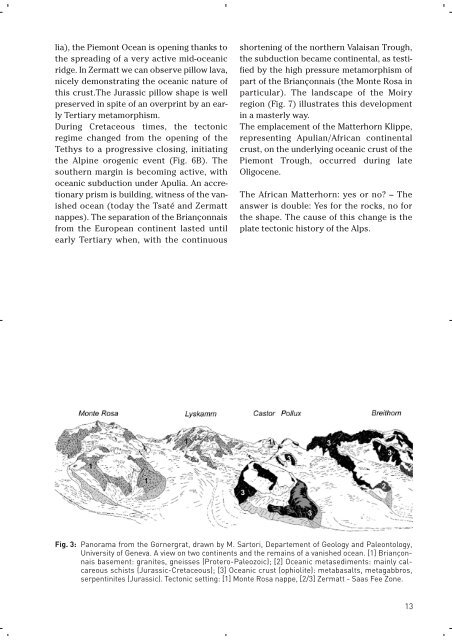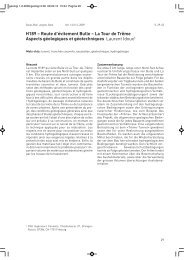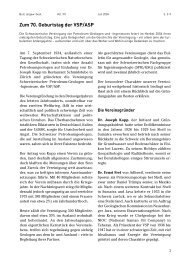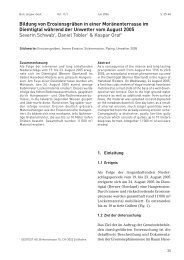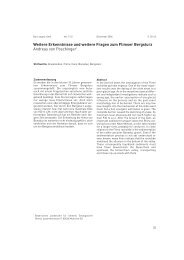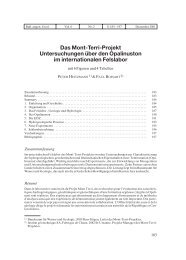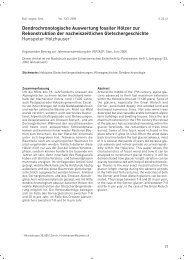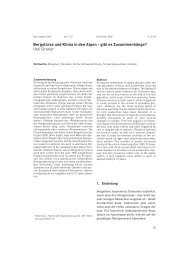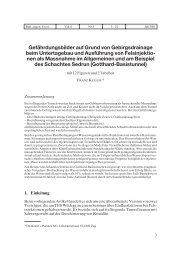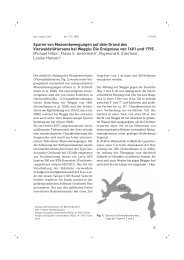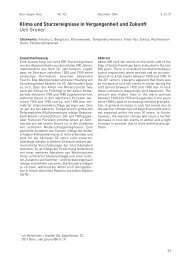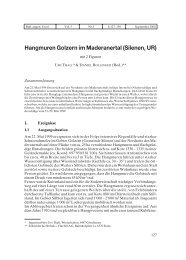The African Matterhorn: yes or no?
The African Matterhorn: yes or no?
The African Matterhorn: yes or no?
You also want an ePaper? Increase the reach of your titles
YUMPU automatically turns print PDFs into web optimized ePapers that Google loves.
lia), the Piemont Ocean is opening thanks to<br />
the spreading of a very active mid-oceanic<br />
ridge. In Zermatt we can observe pillow lava,<br />
nicely demonstrating the oceanic nature of<br />
this crust.<strong>The</strong> Jurassic pillow shape is well<br />
preserved in spite of an overprint by an early<br />
Tertiary metam<strong>or</strong>phism.<br />
During Cretaceous times, the tectonic<br />
regime changed from the opening of the<br />
Tethys to a progressive closing, initiating<br />
the Alpine <strong>or</strong>ogenic event (Fig. 6B). <strong>The</strong><br />
southern margin is becoming active, with<br />
oceanic subduction under Apulia. An accretionary<br />
prism is building, witness of the vanished<br />
ocean (today the Tsaté and Zermatt<br />
nappes). <strong>The</strong> separation of the Briançonnais<br />
from the European continent lasted until<br />
early Tertiary when, with the continuous<br />
sh<strong>or</strong>tening of the n<strong>or</strong>thern Valaisan Trough,<br />
the subduction became continental, as testified<br />
by the high pressure metam<strong>or</strong>phism of<br />
part of the Briançonnais (the Monte Rosa in<br />
particular). <strong>The</strong> landscape of the Moiry<br />
region (Fig. 7) illustrates this development<br />
in a masterly way.<br />
<strong>The</strong> emplacement of the <strong>Matterh<strong>or</strong>n</strong> Klippe,<br />
representing Apulian/<strong>African</strong> continental<br />
crust, on the underlying oceanic crust of the<br />
Piemont Trough, occurred during late<br />
Oligocene.<br />
<strong>The</strong> <strong>African</strong> <strong>Matterh<strong>or</strong>n</strong>: <strong>yes</strong> <strong>or</strong> <strong>no</strong>? – <strong>The</strong><br />
answer is double: Yes f<strong>or</strong> the rocks, <strong>no</strong> f<strong>or</strong><br />
the shape. <strong>The</strong> cause of this change is the<br />
plate tectonic hist<strong>or</strong>y of the Alps.<br />
Fig. 3: Pan<strong>or</strong>ama from the G<strong>or</strong>nergrat, drawn by M. Sart<strong>or</strong>i, Departement of Geology and Paleontology,<br />
University of Geneva. A view on two continents and the remains of a vanished ocean. [1] Briançonnais<br />
basement: granites, gneisses (Protero-Paleozoic); [2] Oceanic metasediments: mainly calcareous<br />
schists (Jurassic-Cretaceous); [3] Oceanic crust (ophiolite): metabasalts, metagabbros,<br />
serpentinites (Jurassic). Tectonic setting: [1] Monte Rosa nappe, [2/3] Zermatt - Saas Fee Zone.<br />
13


